The Armenian cross, also known as the khachkar, is a symbol that carries deep cultural and spiritual significance. The Armenian cross symbolizes the triumph of Christianity over evil, as well as the Armenian people’s resilience and faith.
In this article, we will explore the profound meaning behind the Armenian cross, exploring its historical roots, artistic intricacies, and the spiritual connection it embodies. Get ready to discover the hidden stories behind this captivating symbol.
A Symbol of Faith and Resilience
At first glance, the Armenian cross may appear as a beautifully crafted piece of stone or wood, but its symbolism runs much deeper. It serves as a powerful emblem of Armenia’s rich history and its people’s unwavering faith.
The Armenian cross, often referred to as the khachkar, is more than just an artistic masterpiece; it encapsulates the essence of Armenian identity.
Ancient Origins
The Armenian cross has its roots in antiquity, dating back over a millennium. Its design is a unique blend of intricate patterns and religious motifs.
The cross itself is usually accompanied by elaborately carved motifs, including floral designs, animals, and geometric shapes. This blend of Christian symbolism with indigenous Armenian artistry makes the khachkar a fascinating representation of cultural fusion.
Spiritual Significance
The primary purpose of the Armenian cross is to mark sacred spaces, including churches, monasteries, and cemeteries. Each khachkar is a manifestation of faith and devotion, signifying a connection between heaven and earth.
When you stand before one, you can’t help but feel a profound sense of spirituality.
Cultural Heritage
Beyond its spiritual importance, the Armenian cross is a testament to the resilience of the Armenian people. Throughout history, Armenians have faced numerous challenges, including persecution and exile.
The khachkar stands as a symbol of their enduring spirit and determination to preserve their culture and faith against all odds.
The Craftsmanship Behind the Khachkar
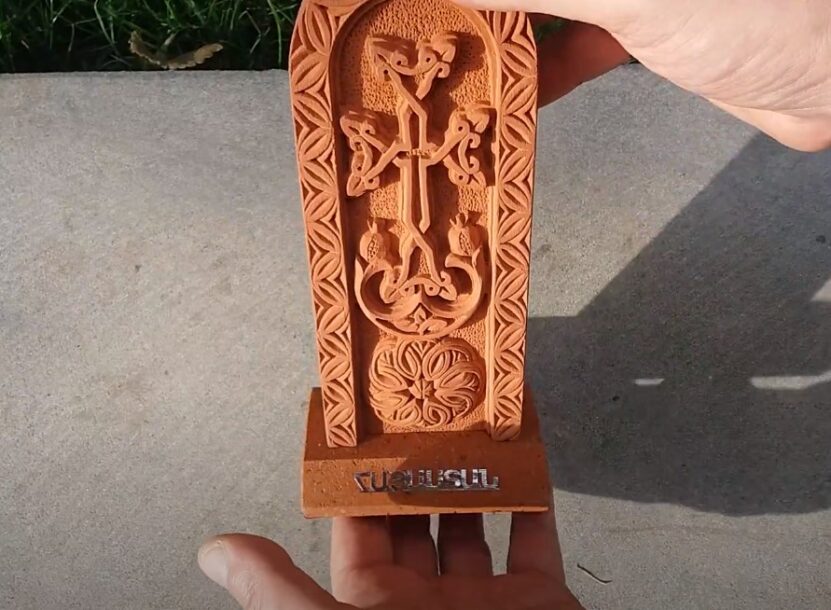
To truly appreciate the Armenian cross, one must explore the incredible craftsmanship that goes into creating these masterpieces. The process of carving a khachkar is a meticulous art form that requires skill, dedication, and an understanding of tradition.
Intricate Carvings
One of the most striking features of the khachkar is its intricate carvings. Skilled artisans spend countless hours meticulously chiseling away at the stone or wood, creating intricate patterns and designs.
These carvings often tell stories from religious texts or depict scenes from Armenian history.
Unique Designs
What sets the Armenian cross apart is its uniqueness. While the basic structure of the cross remains consistent, each khachkar is a one-of-a-kind creation.
Artisans incorporate regional styles and personal touches into their work, making each piece a reflection of their individual creativity and devotion.
Symbolism in Stone
Every element of a khachkar carries symbolism. The cross itself represents Christ’s sacrifice, while the surrounding motifs convey themes of life, death, and rebirth.
These symbols come together to create a harmonious and spiritually charged work of art.
Hope and Unity

In recent years, the Armenian cross has gained international recognition not only for its cultural and religious significance but also for its role as a symbol of hope and unity. In a world often divided by differences, the khachkar serves as a reminder of the power of faith and the potential for harmony.
A Beacon of Peace
The Armenian cross has become a symbol of peace and reconciliation, not only for Armenians but for people of all backgrounds. It reminds us of the importance of preserving our cultural heritage and coming together in the face of adversity.
The Global Impact
In an increasingly interconnected world, the Armenian cross has found its way into the hearts of people worldwide. Its unique beauty and profound symbolism have transcended borders, resonating with those who appreciate art, spirituality, and the human spirit.
Preserving the Legacy
As we look to the future, the preservation of the Armenian cross and its traditions is more critical than ever. Efforts to safeguard this cultural heritage ensure that future generations will continue to be inspired by its beauty and meaning.
Decoding the Symbol
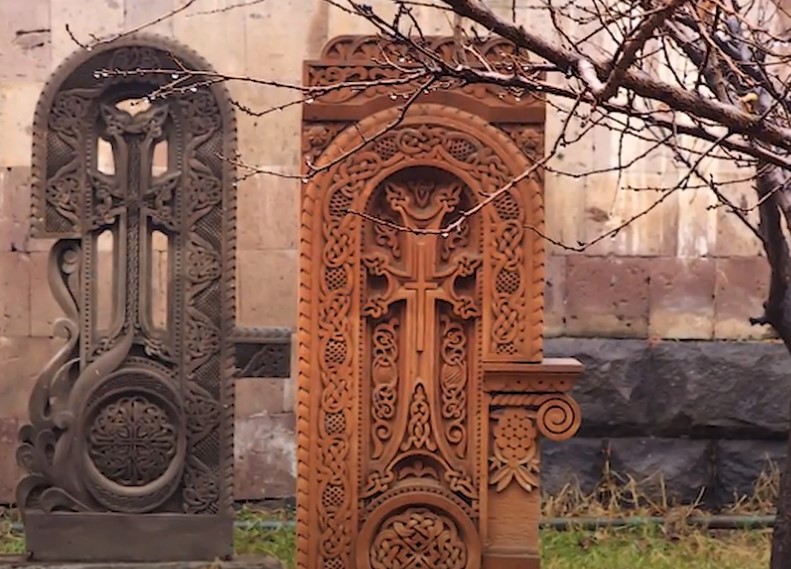
The Armenian cross, or khachkar, is not merely a cross but a complex composition of symbols and motifs that convey a profound narrative. In this section, we will explore the various elements of the Armenian cross, decoding their symbolism and shedding light on the hidden stories they tell.
The Central Cross: Christ’s Sacrifice
At the heart of the Armenian cross lies the central cross, which represents the ultimate sacrifice of Jesus Christ. This fundamental Christian symbol signifies the crucifixion and resurrection, embodying the core of the Christian faith.
It reminds believers of Christ’s suffering and the hope of redemption.
Surrounding Motifs: Life, Death, and Rebirth
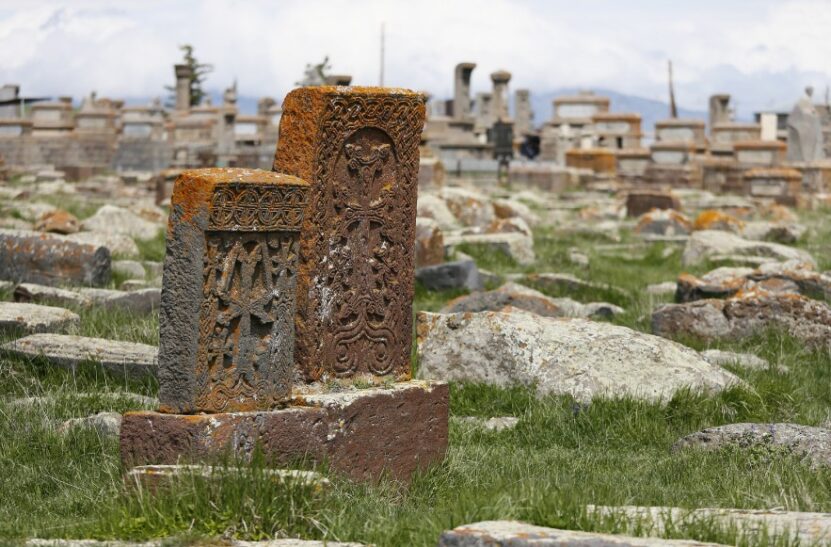
What sets the Armenian cross apart are the intricate carvings that envelop the central cross. These motifs are often inspired by nature and Armenian history, each carrying its own symbolic significance.
Leaves and Vines
Leaves and vines are common motifs in khachkars, symbolizing life and growth. They represent the eternal cycle of life and death, suggesting that even in death, there is the promise of rebirth and renewal.
Animals
Animals, both real and mythical, frequently adorn Armenian crosses. They often symbolize protection, strength, and resilience.
These creatures are guardians, watching over the sacred spaces where khachkars are placed.
Geometric Patterns
Geometric patterns in khachkars are not mere decoration but carry deep spiritual meaning. They symbolize the order and harmony of the universe, reflecting the belief that the divine is present in all aspects of life.
Stories in Stone
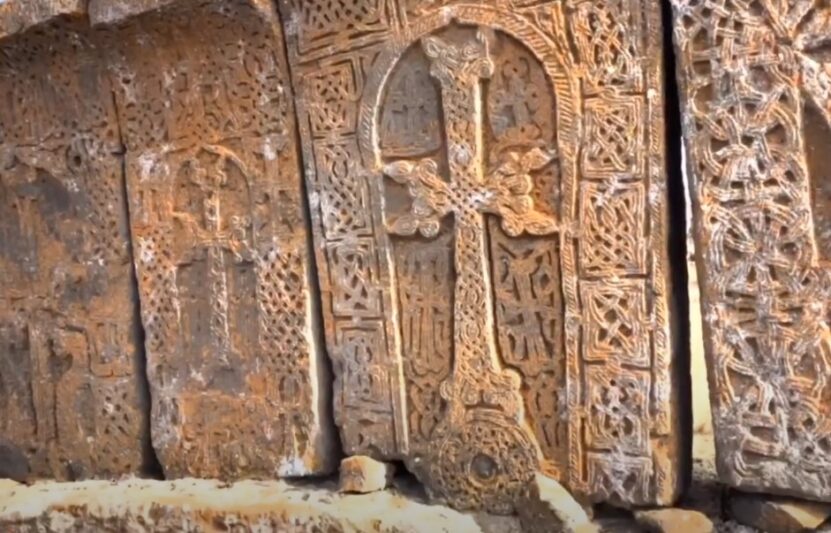
In addition to the visual motifs, many Armenian crosses bear inscriptions in Armenian script. These inscriptions can be prayers, Bible verses, or dedications to loved ones.
They serve as written testimony to the faith and devotion of the individuals or communities that created the khachkars.
Regional Variations
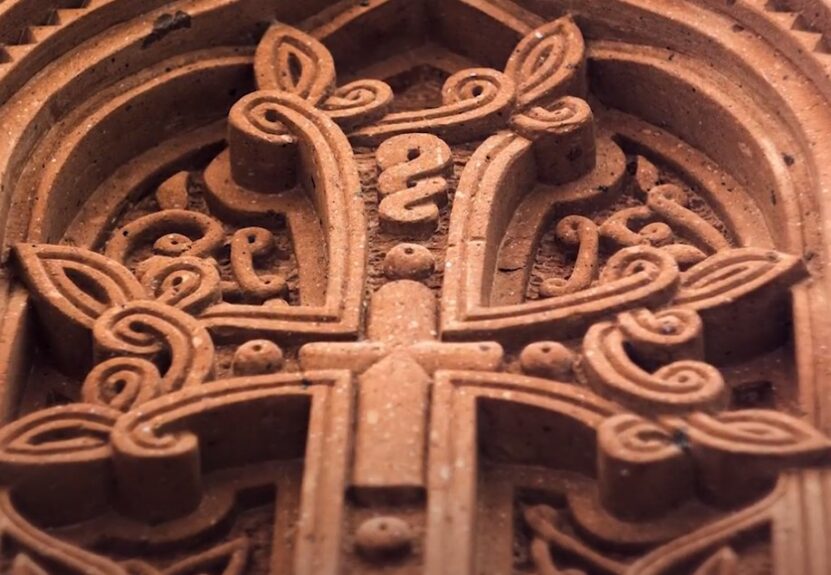
One of the most fascinating aspects of the Armenian cross is its regional diversity. Different parts of Armenia have their own unique styles and design elements, adding to the richness of this cultural tapestry.
Western Armenian Khachkars
Western Armenian khachkars often feature floral and organic motifs, reflecting the lush landscapes of western Armenia. These crosses are known for their elegance and intricacy.
Eastern Armenian Khachkars
In contrast, Eastern Armenian khachkars tend to have more geometric patterns and a bolder, simpler design. They embody the resilience and strength of the Armenian people.
The Khachkar’s Role in Armenian Culture
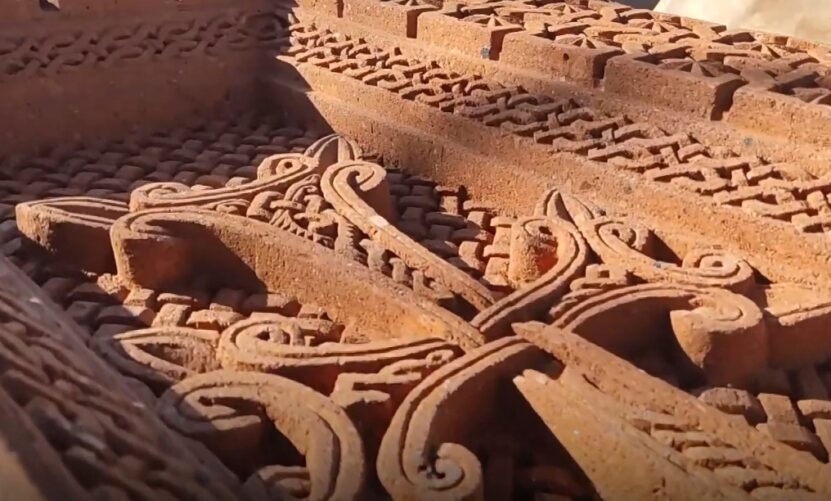
The Armenian cross plays a central role in Armenian culture. It is not limited to religious contexts but is also an integral part of daily life.
Birth and Baptism
khachkars are often present at birth and baptism ceremonies. They are a symbol of blessings and protection for the newborn, marking the beginning of a lifelong spiritual journey.
Marriage
During weddings, Armenian couples may receive a khachkar as a symbol of their commitment to each other and their shared faith. It serves as a reminder of the values they hold dear.
Funerals and Memorials
In times of loss, khachkars offer solace and hope. They are placed in cemeteries and memorial sites, honoring the departed and providing a sense of continuity beyond death.
In the final section of this article, we will explore the contemporary relevance of the Armenian cross, its impact on art and culture, and the challenges and efforts in preserving this precious heritage.
FAQ
FAQ on the Armenian Cross (Khachkar)
How do Armenian khachkars differ in their use of animal imagery?
The animal imagery in Armenian khachkars varies greatly, often symbolizing different attributes. For example, lions might represent courage and strength, while doves could symbolize peace and the Holy Spirit. The specific choice of animals can reflect regional influences, historical periods, or the personal vision of the craftsman.
Are there contemporary artists who still create khachkars, and how do their works differ from ancient ones?
Yes, contemporary artists continue to create khachkars, often blending traditional techniques with modern influences. Their works might incorporate current events, personal narratives, or innovative styles while maintaining the essence of the traditional khachkar. This fusion creates a dynamic link between the past and present, enriching the tradition.
Can khachkars be found outside of Armenia, and what significance do they hold?
Khachkars can indeed be found in various countries where Armenian communities have settled, serving as a vital link to their heritage. In the diaspora, these crosses are symbols of identity and resilience, reminding Armenians of their homeland and cultural roots while promoting cultural exchange and awareness globally.
How is the restoration and preservation of ancient khachkars being approached today?
A: Restoration and preservation of ancient khachkars involve meticulous care. Experts in restoration work to repair damage using techniques that respect the original craftsmanship. There are also efforts in documenting and digitally archiving khachkars to preserve their designs and historical significance for future generations.
Do khachkars play a role in interfaith dialogue and cultural exchange?
Absolutely. Khachkars are increasingly recognized as symbols of universal spiritual values, facilitating interfaith dialogue and cultural exchange. Their rich symbolism and artistic beauty offer common ground for discussions on faith, art, and shared human experiences, fostering mutual respect and understanding.
Are there specific rituals or ceremonies associated with the creation of a khachkar?
The creation of a khachkar is often accompanied by rituals that imbue it with spiritual significance. This can include prayers, blessings, and sometimes a consecration ceremony once the khachkar is completed. These rituals emphasize the sacred purpose of the khachkar, aligning its creation with spiritual intent and reverence.
Bottom Line
In the course of our journey through the intricate world of the Armenian cross, we have uncovered the profound layers of symbolism, history, and cultural significance that this remarkable symbol encapsulates. The symbol, known as the khachkar, is not just a work of art but a testament to the enduring spirit of a people and their unshakable faith.
From its ancient origins to the present day, the khachkar has represented hope, unity, and resilience. Its richly carved motifs tell stories of life, death, and rebirth, weaving a narrative that connects the earthly with the divine.
Each khachkar is a unique masterpiece, a reflection of the artisan’s devotion, and a source of inspiration for all who encounter it.

